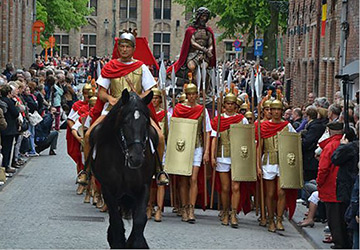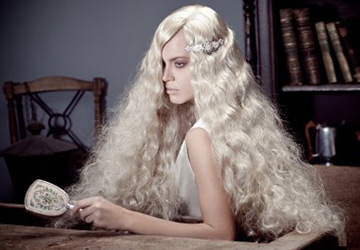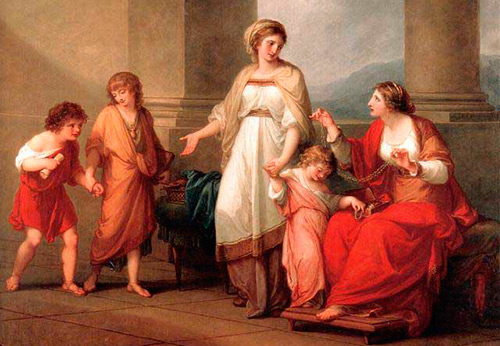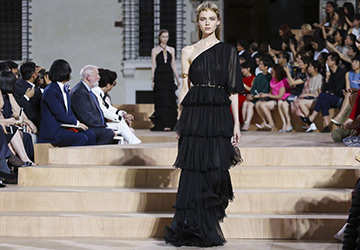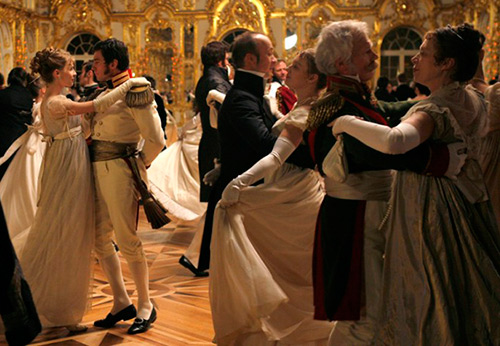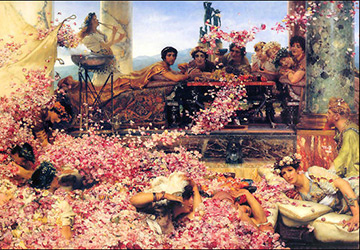Hair care
History of hairstyles in Byzantium
Historical reference
Byzantium is a state that has not existed for a very long time. But at the same time, the state has left a significant mark on history. After all, it was Byzantium that throughout the Middle Ages was the heir to the Roman Empire.
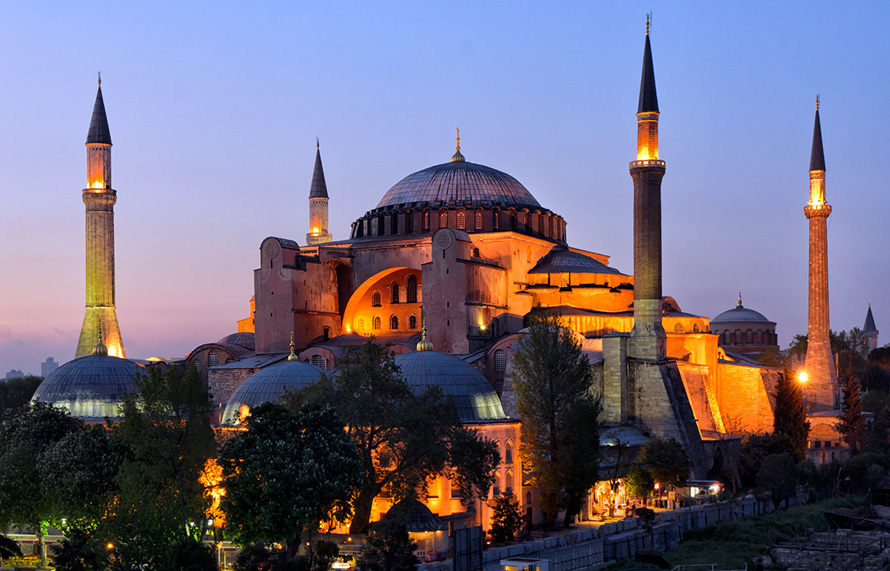
Sofia - the main cathedral of Constantinople, later rebuilt into a mosque, currently there is a museum
In 395, there was a section Roman Empire into two parts - western and eastern. The western part did not last long - a little less than 80 years. Rome fell. Rome was captured by the barbarians. But the eastern part of the former Roman Empire continued to exist. Byzantium, as a state, will last until 1453. As a result, Christian Byzantium will be conquered by Muslims. Today the former capital of Byzantium, the city of Constantinople, is called Istanbul.
In addition to world history, the once existed Byzantium left its mark on the history of Russia. Since the Roman Empire was divided into two parts, the Christian religion, which became the state religion of Rome in the last years of the existence of the Roman Empire, also eventually split into two parts - western and eastern.
Rome became the capital of Western Christianity and those peoples who adopted Christianity from Rome began to be called Catholics. Constantinople became the capital of Eastern Christianity, and those peoples who were baptized from Constantinople, for example, the lands of Kievan Rus, began to be called Orthodox.
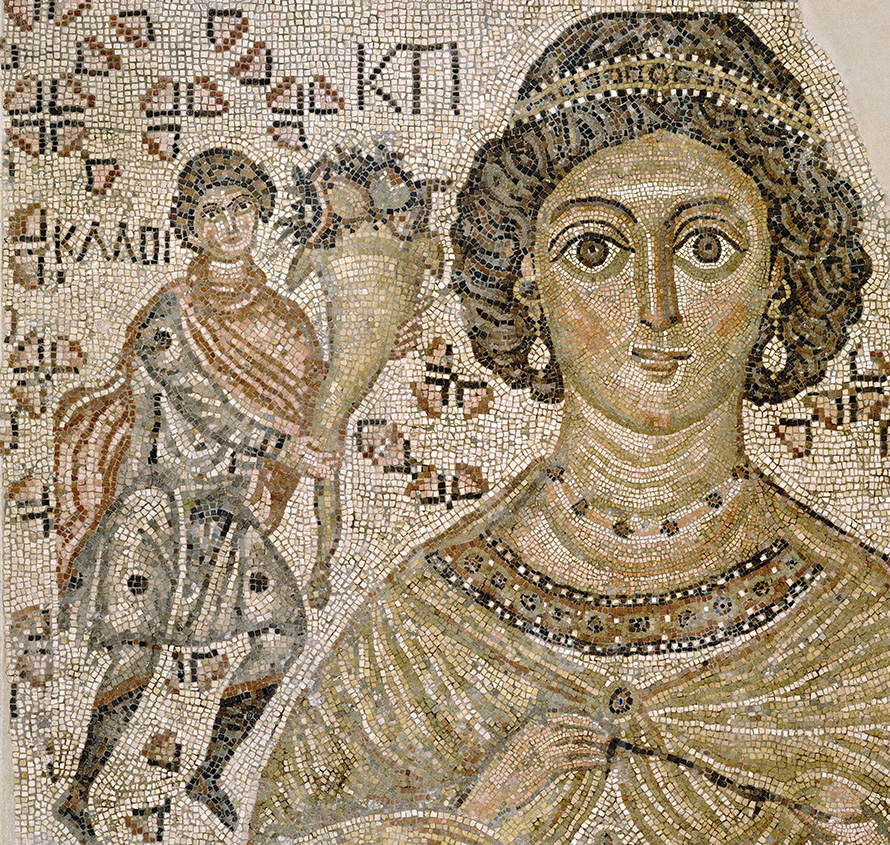
Byzantium hairstyles
Since Byzantium was the heir to the Roman Empire, the hairstyles of the inhabitants of this state for a very long time resembled Roman... Only from the X century, under the influence of the canons of the Christian religion, the hairstyles of the Byzantines will change significantly.
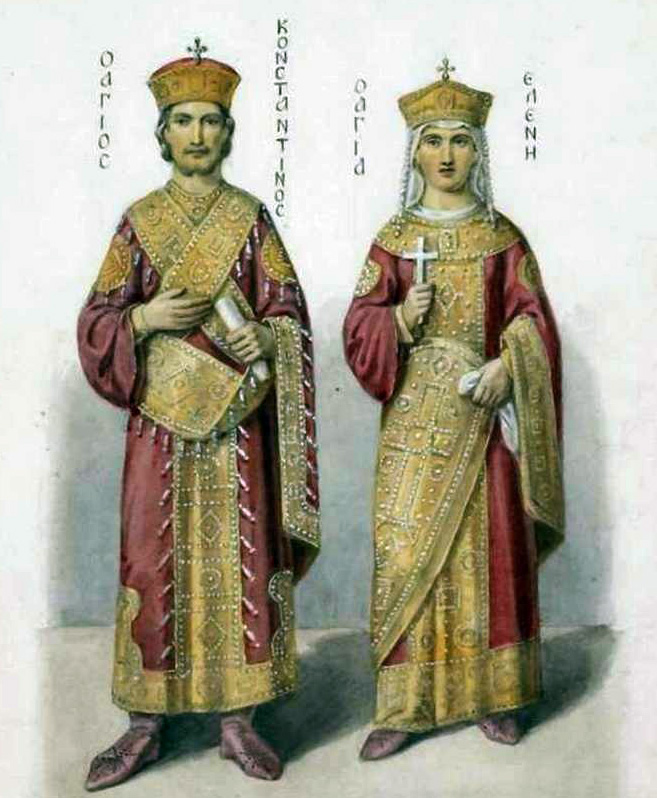
Byzantine emperor Saint Constantine with his mother Saint Helena. Drawing by F. G. Solntsev from the frescoes of the Kiev Cathedral. XI century.
Men's hairstyles of Byzantium
Men, in Roman likeness, originally wore short haircuts with curled hair. The ears were open. At the ends, the hair could curl in larger curls than at the roots. They also wore thick bangs up to the middle of the forehead. Their faces were shaved.
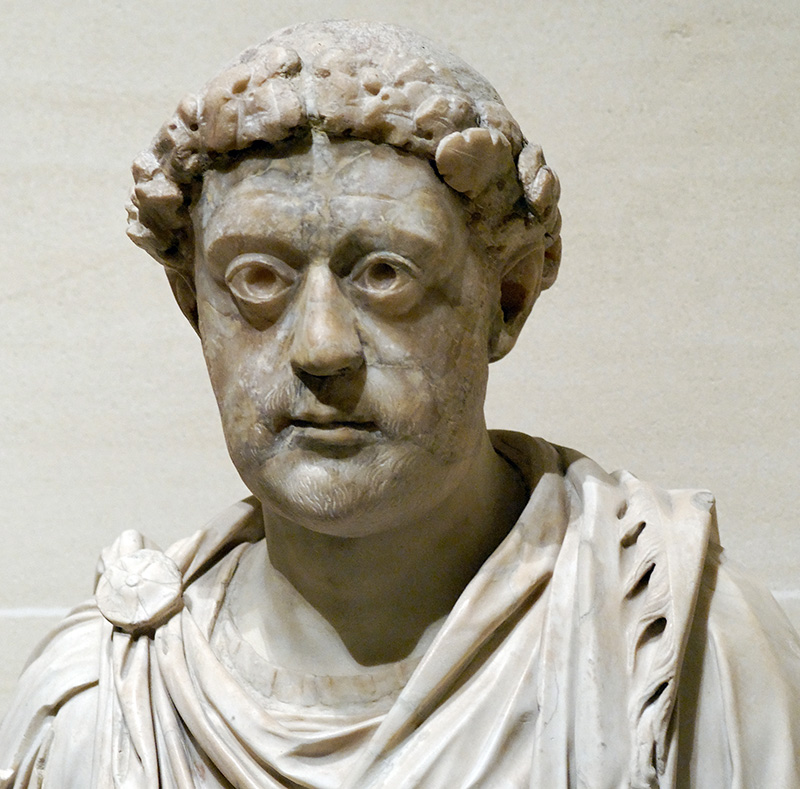
Bust of Emperor Leo I (457-474). Roman hairstyle
Since the 6th century, men's hairstyles from long hair have come into fashion. Hair is worn shoulder-length, imitating the iconographic images of Jesus Christ. Perms are no longer used. Chestnut hair color is also coming into vogue, again, like Christ's. Men could dye their hair that color.
By the 12th century, they begin to wear beards - rounded, or mustache. The beards are curled, dyed with henna.
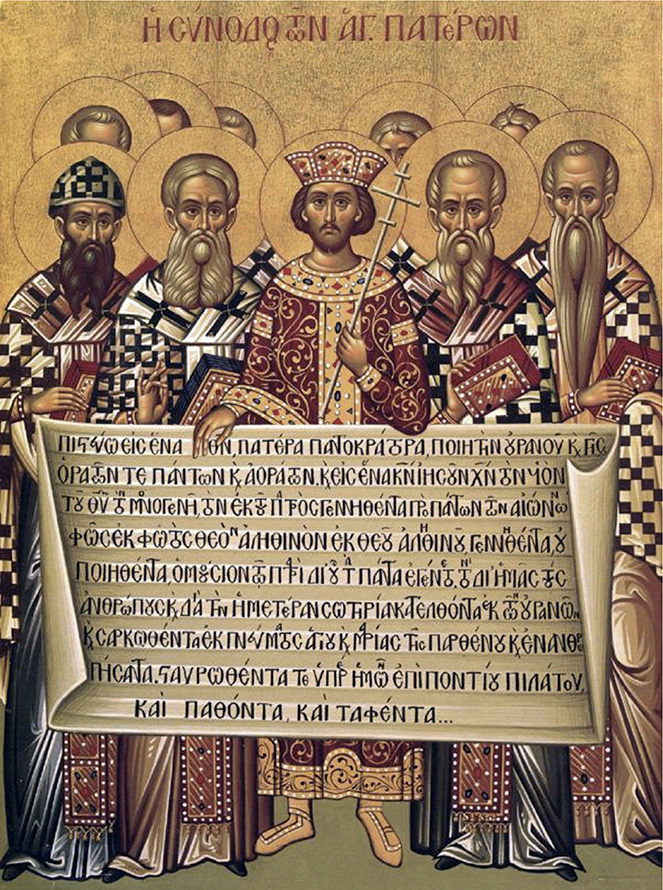
Icon depicting Constantine the Great (center) and the fathers of the First Council of Nicaea (325), holding the Nicene-Constantinople Creed.
The peasant men also wore beards, but longer and without frizz. The peasants had hairstyles: either shoulder-length hair, or short haircuts - a haircut in a circle or a haircut "under a bracket." Haircut "under the brace" - hair on the sides was cut to the middle of the ear, in the front - bangs up to the middle of the forehead.
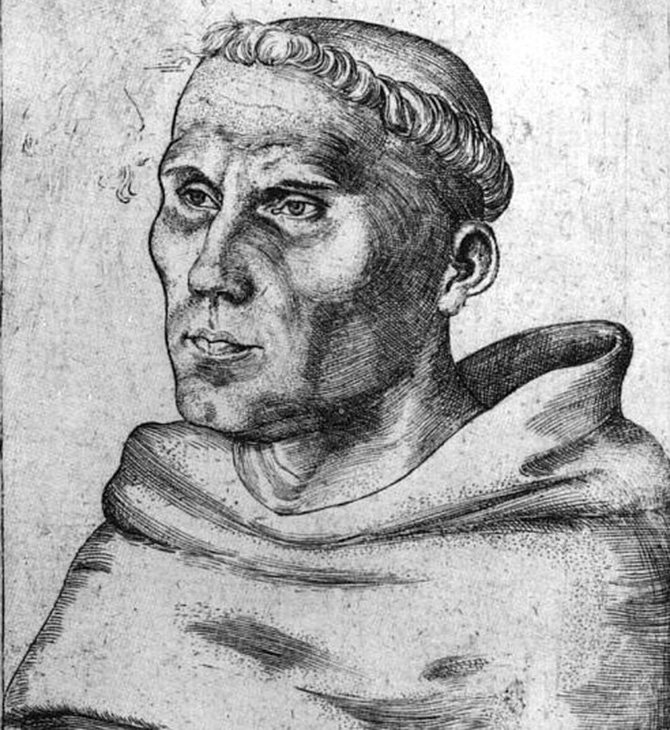
Martin Luther (1459-1530) with tonsure, German theologian, initiator of the Reformation (reform of Catholic Christianity)
Priests also have their own hairstyles. Until the 8th century, they wear the "Apostle Paul's" hairstyle - the hair was shaved off the front of the head, later the "tonsure" hairstyle appears - the hair was shaved in a circle in the center of the head. This hairstyle was mandatory for the clergy of the Catholic Church until 1972.
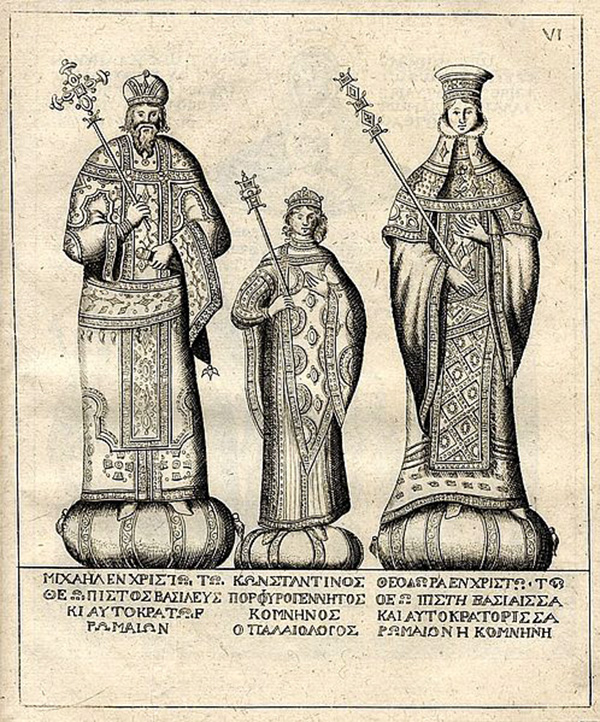
Michael VIII Palaeologus with his wife and son. Illustration from the History of Byzantium by C. Ducanj (17th century). The crowns of the emperor and empress acquired a resemblance to the episcopal miter. According to Ducanj, this type of crown is called a kamilavka. In the left hand of Michael is an akaki (bag of ashes) in the form of a scroll.All three have sceptres in their right hand
Women's hairstyles of Byzantium
Initially, women's hairstyles resembled ancient Greek and Roman hairstyles - with a perm, gathered in a bun. However, later, the most common female hairstyles were nimbo-shaped or spherical hairstyles. Namely, hairstyles with a wide roller of hair, which framed the head, sometimes covering half of the forehead, behind the hair was laid in a bun.
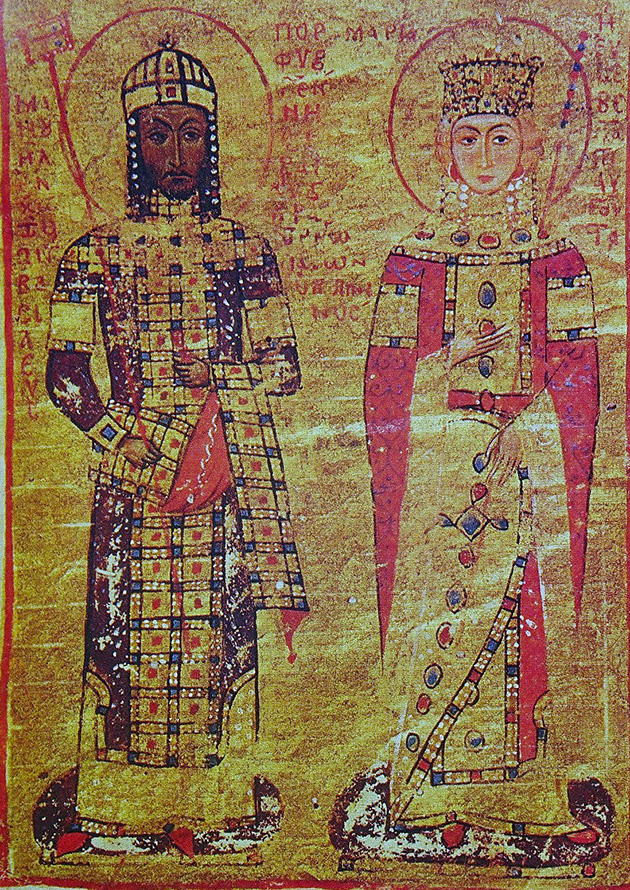
Manuel I Comnenus (1143-1180) and his wife Maria of Antioch
It is becoming mandatory for women to cover their hair with a headdress. Noble women wore various head decorations, while women from the people wore headscarves.
Girls could wear loose hair, and also braided their hair in temporal braids, which went down in a semicircle under the ears and pinned at the back of the head.
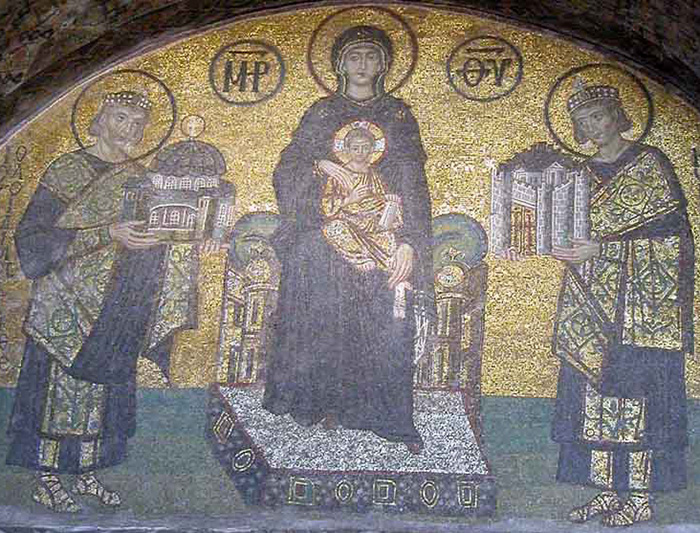
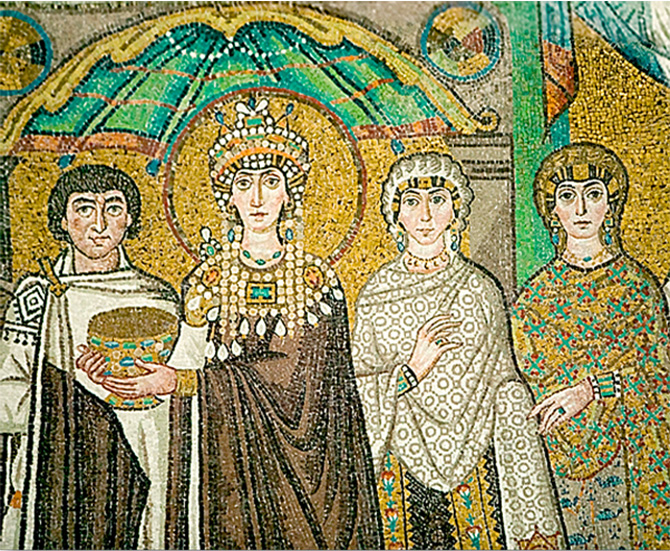
Comments and Reviews
Add a comment
Rating news
Shades of clothing that make women look younger
What shades of hair make women younger: rules and photos
Funny wedding dresses - photos and ideas
12 most expensive down jackets for the winter
How to look 25 at 40: tips from supermodels
Beautiful schoolgirls
Anti-aging haircuts and hairstyles for women
Fashionable skirts for autumn and winter
Fashionable women's trousers for the cold season
Fashionable and stylish sandals for summer 2024
Spring-summer 2024
 Fashionable dresses and tops with thin spaghetti straps
Fashionable dresses and tops with thin spaghetti straps
 Bandana tops: how to wear stylishly and beautifully
Bandana tops: how to wear stylishly and beautifully
 How to put together the perfect men's wardrobe for the summer
How to put together the perfect men's wardrobe for the summer
 Fashionable shorts for spring-summer 2024
Fashionable shorts for spring-summer 2024
 Fashionable skirts for spring-summer 2024: a guide to online shopping
Fashionable skirts for spring-summer 2024: a guide to online shopping
 The most fashionable dresses spring-summer 2024: styles and colors
The most fashionable dresses spring-summer 2024: styles and colors
 Fashionable total look 2024: ideas of images and trends
Fashionable total look 2024: ideas of images and trends
